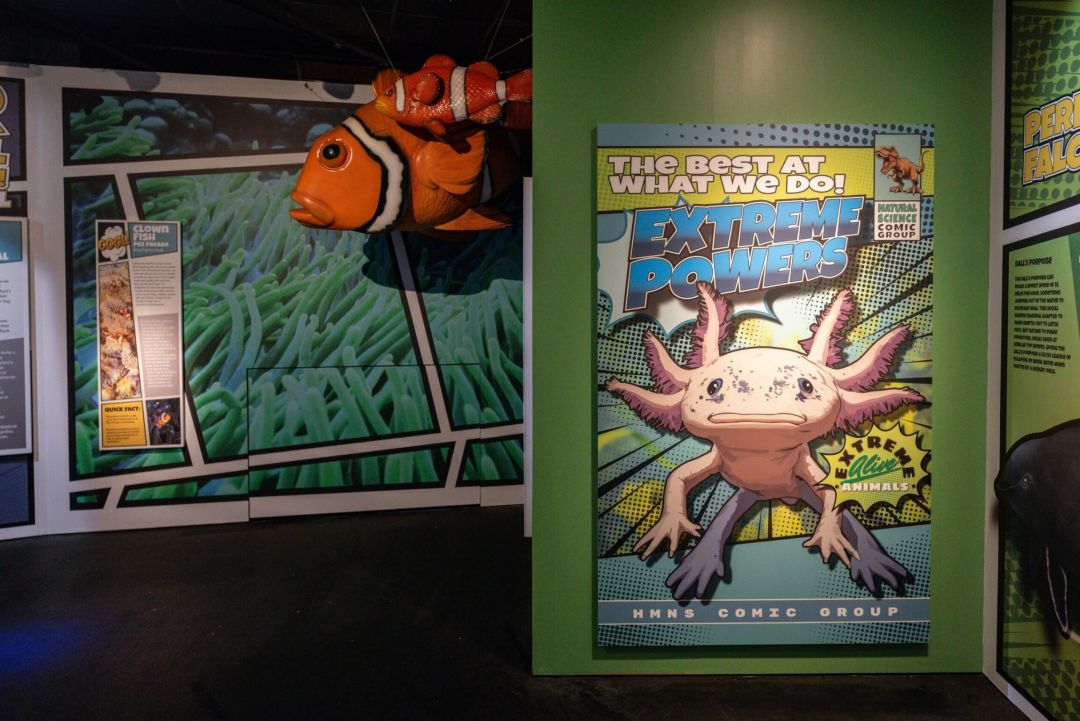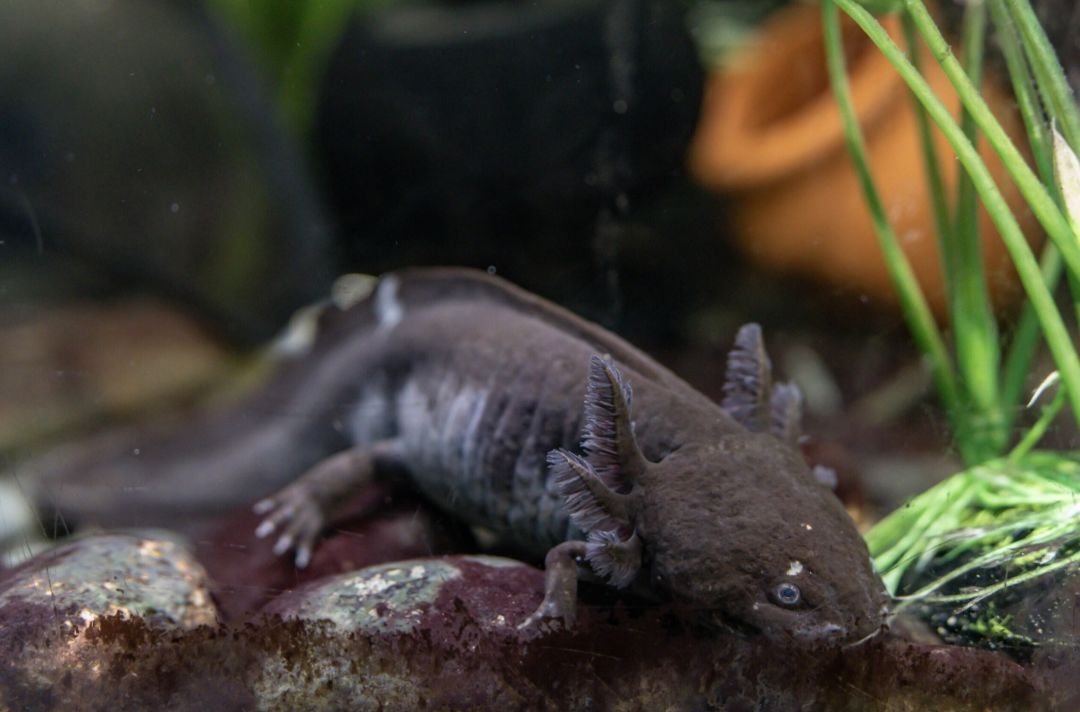HMNS Showcases Animals with Superpowers Worthy of the Justice League

Houstonia’s The Must List tells you about something going on in Houston that you absolutely cannot miss.
Superheroes have landed at the Houston Museum of Natural Science. They’ve got stellar fashion sense beyond spandex and Kevlar, boasting some incredible abilities beyond the scope of human imagination. They can purge the poisons from certain millipede species and glow a vibrant coral on light spectrums we can’t process inside our own brains. And these not-exactly-caped crusaders don’t visit us from past the stars or dimensions unknown—they’re purely terrestrial, marvels of evolutionary adaptations to maximize their chances of survival. In fact, you can visit them now as part of the museum’s Extreme Animals Alive! exhibition.
“We consider all the animals to sort of be superheroes, because they have these amazing powers in their own right,” says Nicole Temple, vice president of education at HMNS and curator for Extreme Animals Alive! “So, for example, the axolotl: If it loses a limb, it can regenerate a limb. If it loses a gill, it can regenerate a gill. But if it loses its brain, it can regenerate its brain as long as it has a little piece of brain stem.”

Wolverine would be proud. Mystique would certainly find common ground with the genderfluid clownfish, which, using a process called protandry, can flip from male to female later in life if the female half of a mating pair dies. Owls could certainly challenge Superman in a competition of enhanced eyesight. Extreme Animals Alive! celebrates all the wonderful ways animals navigate the planet, whether it be living in extreme temperatures, enhanced senses for finding prey (or avoiding becoming prey), or—in the case of dragonflies and horseshoe crabs—stay more or less the same for millennia.
The exhibition also stands out for including 23 live animals on view, as well as the touch tanks full of skates, starfish, sea cucumbers, and other marine creatures that first charmed visitors during the Sharks! The Meg, the Monsters and the Myths exhibit two years ago. Each one is assigned a dossier, designed using classic comic book aesthetics, listing their names, favorite foods, and likes. Tokay and Gekko-Gekko, the two tokay geckos, enjoy “anger and hornworms” for meals and their hobbies include “silently judging [their] keepers and hiding in obvious places.” Onyx the Savannah monitor noshes on “snails and sand,” and in their spare time they love “harassing [their] keepers and trying to eat sand.”

Such whimsical yet truthful details help highlight that the animals on display have their own unique personalities and peccadillos. Eustace the six-banded armadillo comes when his trainers call him. The fennec foxes don’t even need to be called to be sociable with their humans. HMNS has featured live animals before, most recently in its still-ongoing Death by Natural Causes exhibit, and maintains a team of seven keepers to care for the painstakingly selected roster of superheroes.
“There’s six galleries. We have ‘What is an adaptation?’ Then we have superpowers…extreme cold, extreme heat, extreme dark, and then super survivors,” Temple says. “So we started with those concepts, and then we started researching what animals we could reasonably take care of and what would match those criteria. Since we are a museum and not a zoo, we need to do justice to the animals, so we don’t have anything that is too big.”
Many of the lessons gleaned from Extreme Animals Alive! also connect back to HMNS on the whole. Temple points out that the mechanism through which owls adjust their eyes (known alternately as the scleral or sclerotic ring) can also be found in the museum’s paleontology hall, showing the evolutionary pathway from dinosaurs to birds. She laughs at how one only needs to look at the feet of grackles congregating in grocery store parking lots to see the link from ancient reptiles to modern avians in action.
Some of the species discussed and displayed in the exhibit can be found right in Houstonians’ backyards, or at least their cousins. Eustace, the six-banded armadillo, is indigenous to South America but his family among the Mexican long-nosed armadillos (formally the nine-banded armadillos) are a semi-common sight at the Houston Arboretum and Nature Center and other heavily wooded areas. Sharp-eyed residents may also spot stick bugs and possums visually similar to their friends at the museum.

To Temple and her team, the combination of comic book visuals, personifying the animals, and finding ways to show how Extreme Animals Alive! reverberates throughout the museum and into Houston’s backyards builds empathy. When people develop an understanding of the world around them, and the interdependence required to power daily life, it creates an impetus for positive—dare we say heroic?—change.
“If you know more about things, you’re more appreciative of things. And then when you know more and you’re more appreciative, you are probably a little bit better to the environment,” she says.
Know Before You Go
Extreme Animals Alive! is now open at the Houston Museum of Natural Science. Tickets are $35 for adults and $27 for children, which includes general admission for the rest of the museum. For more information, visit the website.




